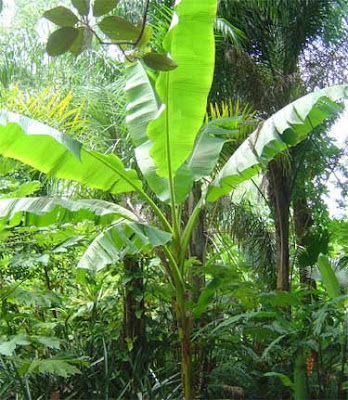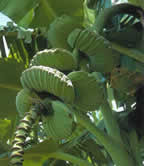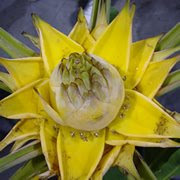I was very honored to be asked to speak at a recent conference on sustainability and garden centers. As usual, not only was I able to share my wisdom with others, but I learned alot as well. For example, did you know there are numerous issues with selling ladybugs? Look for my post on that soon.
The best news is that our keynote speaker, Joe Lamp'l, had a list of the things he thinks a garden center should do to be sustainable, and we do all of them!!! Recycling, waste reduction, green roof, etc... It was nice to see we are on the right track. I have now challenged our staff to stay ahead of the curve and find even more ways to leave less mark on the environment.
Thursday, November 20, 2008
Monday, October 20, 2008
Gruesome Gardens
So, our annual Haunted House is back and better than ever. Gruesome Gardens has been open for a couple of weeks, and the response are great!
We are having a special Kid's Night this Thursday, Oct. 23rd from 7-10pm. We will turn down / tone down the scares so that kids under 12 can come and enjoy. I would still not recommend it for kids under, say 5-6, but you know your kids better than we do, so bring them out if you dare.
After Thursday, we will be open as follows:
Fri. & Sat. Oct. 24 &25 7pm-12am
Sun. Oct 26th 7-10pm
Tues. & Wed. Oct 28 & 29 7-10pm
Thurs. Oct. 30th 7-11pm
Fri. & Sat. Oct 31 & Nov. 1 7pm-12am.
Monday, June 30, 2008
The Truth About Organic Gardening

I just finished a great book about organic vs. conventional gardening. It is called "The Truth About Organic Gardening" by Jeff Gillman. Why did I like it? Well, for one it was an easy read. I'm a plant geek, not a bookworm. Also, I really agreed with the author, so that made it fun to read (self justification is good for anyone).
Mr. Gillman really throws it all on the table, comparing and contrasting several different organic and synthetic solutions to common pest and disease problems. He points out that while many synthetics are harmful to the environment, some are not so bad. Also, some organics can be very harmful to the environment. He even uses an old analogy I really like, "A rattlesnake is organic, but it is very deadly".
He, like I, definitely believes in using organics over synthetics, but just wants his readers to be informed of what it is they are using.
I came up with another analogy while reading that I would like to share, but be warned. If you wear your heart on your sleeve, you may want to stop reading.
If you found a dog that was ill, had mange, parvo, and broken legs, and the vet said the best thing would be to put him down, you might agree it was the humane thing to do. But we see people nearly every day that insist on "saving" and plant that is wrought with disease, pests, and suffering root systems. The humane thing to do would be to put it out of it's misery. It is also the best thing you can do for the environment. The best way to be safe is to spray nothing at all.
Just keep this in mind the next time you find spider mites on a $1.29 annual plant.
Ohio Garden Centers
Well friends, Jill and I just got back from a tour of Garden Centers in the Western Ohio area. As always, it is interesting to see another market and how they do things. The best lesson I learned is that you can have all the "makings" of a great garden center (paved walkways, tons of parking, all new equipment, etc...) but still not have a great garden center.
It made me very proud of how hard we have to work here at The Great Outdoors to make the place as beautiful as it is. I think you can really see the heart and soul we put into our place, working with what we have, to make every guests experience a wonderful one.
Thanks to all the people at the host garden centers and the ANLA staff for a wonderful tour.
It made me very proud of how hard we have to work here at The Great Outdoors to make the place as beautiful as it is. I think you can really see the heart and soul we put into our place, working with what we have, to make every guests experience a wonderful one.
Thanks to all the people at the host garden centers and the ANLA staff for a wonderful tour.
Tuesday, June 3, 2008
Going Bananas
Did you ever wonder what varieties of bananas would work in your yard and whether they will bloom and make fruit or just be ornamental? Well there are many varieties and they range from the very cold-hardy Japanese Fiber Banana (Musa basjoo) which has made fruit in my "gets as cold as the airport" yard in Manchaca many times, to the strictly ornamental Chinese Yellow Banana that sports a large yellow flower for months on end. The thing to remember about bananas is that they make fruit on second year trunks. So if we have a mild winter, don't cut your banana to the ground! Instead, simply trim off the dead leaves and hope that it will re-sprount from the center of the trunk!!! That way you will have a plant trunk that can make the fruit that makes it so incredibly fun, tropical looking and tasty!
Here are some of my favorite varieties (many of which we have in stock!)
Ensete ventricosum 'Maurelii'
 Large banana having huge paddle-shaped leaves with deep red veins. Bears small inedible fruits but is grown strictly for its beautiful tropical look. This banana has the unique characteristic of always being single stem. A native to Ethiopia and is popular due to its red color on the trunk, stems, and underside of leaves. In town, it will grow outside to about 10-11’ tall. Zone 9.
Large banana having huge paddle-shaped leaves with deep red veins. Bears small inedible fruits but is grown strictly for its beautiful tropical look. This banana has the unique characteristic of always being single stem. A native to Ethiopia and is popular due to its red color on the trunk, stems, and underside of leaves. In town, it will grow outside to about 10-11’ tall. Zone 9.Musa Basjoo – Japanese Fiber Banana
 This is the most cold hardy banana available and is our most popular, too. It will grow 12- 18’ tall! From the Ryukyu Islands of Japan , it is relatively wind tolerant and will grow 12-18’ tall. The plant has long, slender, bright green leaves. I grow this in my yard and the fruit is quite tasty, despite its name. It is hardy planted in ground to -3°F and with protective mulching it can survive temperatures reaching down to -20°F. Its inflorescence is one of the most beautiful of all bananas. Strong fibers in the trunk of the 'Basjoo' have been used to make fabrics. It is a great landscape plant, it lends a tropical appearance to any situation. This is a great addition for gardeners living in cold temperate areas. 'Basjoo' also does very well in containers and makes a good interior plant. Zone 4.
This is the most cold hardy banana available and is our most popular, too. It will grow 12- 18’ tall! From the Ryukyu Islands of Japan , it is relatively wind tolerant and will grow 12-18’ tall. The plant has long, slender, bright green leaves. I grow this in my yard and the fruit is quite tasty, despite its name. It is hardy planted in ground to -3°F and with protective mulching it can survive temperatures reaching down to -20°F. Its inflorescence is one of the most beautiful of all bananas. Strong fibers in the trunk of the 'Basjoo' have been used to make fabrics. It is a great landscape plant, it lends a tropical appearance to any situation. This is a great addition for gardeners living in cold temperate areas. 'Basjoo' also does very well in containers and makes a good interior plant. Zone 4.
 This is the most cold hardy banana available and is our most popular, too. It will grow 12- 18’ tall! From the Ryukyu Islands of Japan , it is relatively wind tolerant and will grow 12-18’ tall. The plant has long, slender, bright green leaves. I grow this in my yard and the fruit is quite tasty, despite its name. It is hardy planted in ground to -3°F and with protective mulching it can survive temperatures reaching down to -20°F. Its inflorescence is one of the most beautiful of all bananas. Strong fibers in the trunk of the 'Basjoo' have been used to make fabrics. It is a great landscape plant, it lends a tropical appearance to any situation. This is a great addition for gardeners living in cold temperate areas. 'Basjoo' also does very well in containers and makes a good interior plant. Zone 4.
This is the most cold hardy banana available and is our most popular, too. It will grow 12- 18’ tall! From the Ryukyu Islands of Japan , it is relatively wind tolerant and will grow 12-18’ tall. The plant has long, slender, bright green leaves. I grow this in my yard and the fruit is quite tasty, despite its name. It is hardy planted in ground to -3°F and with protective mulching it can survive temperatures reaching down to -20°F. Its inflorescence is one of the most beautiful of all bananas. Strong fibers in the trunk of the 'Basjoo' have been used to make fabrics. It is a great landscape plant, it lends a tropical appearance to any situation. This is a great addition for gardeners living in cold temperate areas. 'Basjoo' also does very well in containers and makes a good interior plant. Zone 4.Musa ‘Belle’
 A good, wind tolerant dessert type banana. A 'Psang Raja' sport, it is the most rigorous growing banana in Florida. Zone 9
A good, wind tolerant dessert type banana. A 'Psang Raja' sport, it is the most rigorous growing banana in Florida. Zone 9Musa ‘Bordelon’
First discovered in the Louisiana town of Bordelonville, this cultivar slightly resembles Musa acuminate ssp. Zebrine, the Blood Banana. Large ornamental foliage has maroon splotches on the upper surface and even more maroon on the underside; this cultivar also grows taller so it has more impact. Readily produces flowers and makes seeded, inedible fruit, which are also ornamental. Grows to 14’ tall. Wind Resistant. Zone 8
Musa 'Dwarf Brazilian'
This is very similar to the larger ‘Brazilian’, but much shorter (6-8’). Its sweet bananas are also smaller than that of the ‘Brazilian’. It should be grown more widely, as it has good wind resistance and very tasty fruit. Its smaller stature makes it more suited to small gardens, greenhouses, and large containers. Wind Resistant. Zone 7
Musa 'Dwarf Cavendish'
A very popular banana, it will bear bunches with up to 90 bananas, each slightly shorter than the “grocery store” varieties. It will grow to about 8 feet and has a solid heavy trunk. Juvenile leaves will have some reddish-purple markings, but later leaves will be all green. This Musa is a fast grower with excellent fruit. Zone 8
First discovered in the Louisiana town of Bordelonville, this cultivar slightly resembles Musa acuminate ssp. Zebrine, the Blood Banana. Large ornamental foliage has maroon splotches on the upper surface and even more maroon on the underside; this cultivar also grows taller so it has more impact. Readily produces flowers and makes seeded, inedible fruit, which are also ornamental. Grows to 14’ tall. Wind Resistant. Zone 8
Musa 'Dwarf Brazilian'
This is very similar to the larger ‘Brazilian’, but much shorter (6-8’). Its sweet bananas are also smaller than that of the ‘Brazilian’. It should be grown more widely, as it has good wind resistance and very tasty fruit. Its smaller stature makes it more suited to small gardens, greenhouses, and large containers. Wind Resistant. Zone 7
Musa 'Dwarf Cavendish'
A very popular banana, it will bear bunches with up to 90 bananas, each slightly shorter than the “grocery store” varieties. It will grow to about 8 feet and has a solid heavy trunk. Juvenile leaves will have some reddish-purple markings, but later leaves will be all green. This Musa is a fast grower with excellent fruit. Zone 8
Musa ‘Dwarf Orinoco'
The ‘Dwarf Orinoco' is a small vigorous plant that is solid green and has a thick stem. It is a heavy bearer of thick skinned fruit of very good eating quality. There is very little curvature to the fruit and the fruit can ripen on the plant without splitting. The plant is hardy and withstands cold temperatures and wind, but must be supported when carrying large heads of fruit. Grows to 5-6’ tall and wind tolerant. Zone 7b.
Musa ‘Gran Nain’
‘Gran Nain’ is an outstanding banana variety growing from 6 to 8 feet tall and solid green in color. Very attractive for its landscaping potential and good wind resistance. The ‘Gran Nain’ produces very large heads of delicious fruit. Zone 8.
Musa ‘Ice Cream’ (Blue Java)
This hardy, cold tolerant banana plant reaches up to 15 feet in height. In spite of its height, it stands up to the wind well having a strong stem and root system. The leaves are a silver-green color. And the fruit is blue-green. The fruit is medium sized and the flesh is snow white. The quality of the fruit is excellent, many rate this is the best tasting banana. Zone 8.
Musa ‘Misi Luki”
This banana has the same characteristics as ‘Dwarf Namwah’, growing 10-12 feet tall and disease resistant. The 4” fruit has excellent flavor. Zone 9.
Musa ‘Monkey Fingers’
This is a very unusual banana and a must for serious collectors. This banana grows 18-20 feet high and has a long raceme (5 to 6 feet) of fruit with long skinny tart tasting bananas. ‘Monkey Fingers’ is a real conversation piece. Zone 8.
Musa ‘Orinoco’
The ‘Orinoco’ is a solid green banana that grows to about 16 feet. If it is crowded it can achieve 20 feet. The fruit is about 8 to 10 inches long and of an angular form. It is quite thick, up to two inches, and tapered at the tip. There is very little curvature to the fruit. The fruit can ripen on the plant without splitting. When ripe the fruit is very delicious. The fruit is often cooked when green either fried or sometimes boiled. The ‘Orinoco’ is a hardy plant and withstands cold temperatures well. It stands up to wind well but must be supported when carrying large heads of fruit. Their fruit is sometimes called "donkey bananas". Zone 7.
Musa ‘Rajapuri’
The 'Rajapuri' is small at 6 to 8 feet tall. This plant that originated from India is a first choice for landscaping. The plant is totally green, has a very thick stem and stands up very well to wind. The leaves are wider than those of most bananas growing up to 3 feet wide. It is the best plant to grow in marginal areas or where a grower does not intend to put much care into the cultivation of bananas. The heads of fruit are of moderate size with medium sized fruit that are very sweet. Zone 8.
Musa ‘Praying Hands’
 This produces perhaps the most unusual and distinctive of all banana fruits. Two adjacent hands of bananas are fused, giving the appearance of praying hands. This is not just a collector’s item, the fruits are delicious ripe, containing a hint of vanilla flavor. When totally ripe, individual bananas can be carefully separated from each other. An excellent all-around plant with some wind resistance; it is very collectible. Zone 8.
This produces perhaps the most unusual and distinctive of all banana fruits. Two adjacent hands of bananas are fused, giving the appearance of praying hands. This is not just a collector’s item, the fruits are delicious ripe, containing a hint of vanilla flavor. When totally ripe, individual bananas can be carefully separated from each other. An excellent all-around plant with some wind resistance; it is very collectible. Zone 8. Musa ‘Cardaba’
One of the greatest bananas for cooking. The ‘Cardaba’ is a beautiful plant with an unusual bluish-green colored fruit. The bright white interior contrasts with the outer peel. It originated from Thailand and is believed to be cultivar of ‘Saba’. Excellent cultivar! Zone 8.
Musa ‘Super Dwarf Cavendish’
This dwarf variety (3-4’) makes a great potted plant for any patio. It has an attractive mahogany colored trunk and will produce a small edible fruit even in a container. Zone 8.
Musella lasiocarpa ‘Chinese Yellow Banana’
 At one time this rare banana was thought to be extinct in the wild in its native Yunnan, China. Its butter-yellow inflorescence is a sight to see. Bracts are stiff and waxy and may last up to nine months on the plant. You may get 2-3 flowers on one plant. Does not make an edible banana, but it is worth growing just for the unique and long lasting flowers. It is a tight clumper and does not run. Zone 7.
At one time this rare banana was thought to be extinct in the wild in its native Yunnan, China. Its butter-yellow inflorescence is a sight to see. Bracts are stiff and waxy and may last up to nine months on the plant. You may get 2-3 flowers on one plant. Does not make an edible banana, but it is worth growing just for the unique and long lasting flowers. It is a tight clumper and does not run. Zone 7.
One of the greatest bananas for cooking. The ‘Cardaba’ is a beautiful plant with an unusual bluish-green colored fruit. The bright white interior contrasts with the outer peel. It originated from Thailand and is believed to be cultivar of ‘Saba’. Excellent cultivar! Zone 8.
Musa ‘Super Dwarf Cavendish’
This dwarf variety (3-4’) makes a great potted plant for any patio. It has an attractive mahogany colored trunk and will produce a small edible fruit even in a container. Zone 8.
Musella lasiocarpa ‘Chinese Yellow Banana’
 At one time this rare banana was thought to be extinct in the wild in its native Yunnan, China. Its butter-yellow inflorescence is a sight to see. Bracts are stiff and waxy and may last up to nine months on the plant. You may get 2-3 flowers on one plant. Does not make an edible banana, but it is worth growing just for the unique and long lasting flowers. It is a tight clumper and does not run. Zone 7.
At one time this rare banana was thought to be extinct in the wild in its native Yunnan, China. Its butter-yellow inflorescence is a sight to see. Bracts are stiff and waxy and may last up to nine months on the plant. You may get 2-3 flowers on one plant. Does not make an edible banana, but it is worth growing just for the unique and long lasting flowers. It is a tight clumper and does not run. Zone 7. Monday, June 2, 2008
Don't forget to WATER!!!!

With the heat of summer upon us, watering is becoming more and more important. Now, don't get me wrong, I'm all for conserving water, but some plants just plain need irrigation in this heat and drought. ANY newly installed plant will need a regular supply of water. One "mistake" we often see is not providing enough water when the plant is watered. Keep this in mind; you cannot water a plant too much at one time. Overwatering is a function of watering too often. When you do water a plant, be sure that you soak the entire root ball well, especially on larger plants.
Even your "established" plants could benefit from an occasional deep soaking, maybe once every 3-4 weeks. It will keep them looking much better and keep them from getting stressed and possibly attacked by bugs or disease. Soaker hoses are great for this!!
Cutting back larger perennials will reduce foliage and therefore water needs. See Tom's article below.
Thursday, May 22, 2008
Garden Hygiene 101: Spring Pruning
Get the most flower power per gardening hour this season by giving your favorite annuals and perennials a haircut! Many flowering plants will not only rebloom after a light pruning, but will actually explode with twice the number of flowers! Why? Because every time you cut a branch, it will respond by sending out two or more branches, all of which will soon have flowers. By pruning again midsummer, you will more than double the number of branches—and flowers—from late spring!
I know, that’s a lot of math, but trust us: YOU + PRUNERS + PLANTS = HAPPINESS.
Here’s a short list of plants that will rebloom after a light pruning:
Salvia
Lantana
Verbena
Cuphea
Duranta
Pride of Barbados
Canna
Esperanza
Get the most flower power per gardening hour this season by giving your favorite annuals and perennials a haircut! Many flowering plants will not only rebloom after a light pruning, but will actually explode with twice the number of flowers! Why? Because every time you cut a branch, it will respond by sending out two or more branches, all of which will soon have flowers. By pruning again midsummer, you will more than double the number of branches—and flowers—from late spring!
I know, that’s a lot of math, but trust us: YOU + PRUNERS + PLANTS = HAPPINESS.
Here’s a short list of plants that will rebloom after a light pruning:
Salvia
Lantana
Verbena
Cuphea
Duranta
Pride of Barbados
Canna
Esperanza
Monday, March 3, 2008
THE BEST SUCCULENTS..... EVER!!!!
Tuesday, February 12, 2008
Sustainable Weekend

I am working on a new series for this blog and our newsletter about being a more sustainable and earth friendly gardener, but I just want to start by saying this. BE GLAD IF YOU LIVE IN AUSTIN!!!! After traveling this winter, especially in the mid-west, I've seen just how far ahead of the rest of the US Austin is. Sure, we have a long way to go, but Austin definately has a head start.
Merrideth
Monday, January 28, 2008
Valentine's Day is just around the corner.

 With Valentine's Day coming in just a couple of weeks, it's time to start thinking of what to get that special someone in your life. While roses are the tradition, here in Austin traditions were made to be broken. We have a great selection of orchids, bromeliads, anthuriums, and other plants that make great gifts and last much longer than cut roses do. Stop by and let us help you build an unforgetable Valentine's masterpiece.
With Valentine's Day coming in just a couple of weeks, it's time to start thinking of what to get that special someone in your life. While roses are the tradition, here in Austin traditions were made to be broken. We have a great selection of orchids, bromeliads, anthuriums, and other plants that make great gifts and last much longer than cut roses do. Stop by and let us help you build an unforgetable Valentine's masterpiece.
Wow!! What a great trip!

Well friends, I recently returned from a trip to Florida where I got to see the latest and greatest in tropical landscape and indoor plants. Let me tell you that this spring we will have a tremendous selection of unusual plants. But you don't have to wait until then. My first orders actually arrived a day after I did and already the buzz is great!! Stop by to see what's new for your indoor garden.
Subscribe to:
Posts (Atom)


